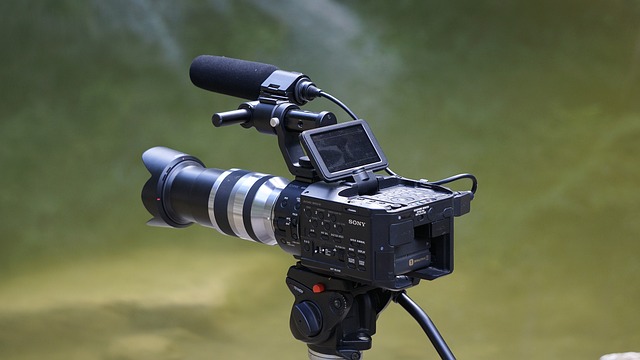
Elevate Your Content: Video Editing Techniques for Everyone
In a world where attention spans are shorter than ever, engaging video content has become essential for businesses, creators, and educators alike. Whether you’re a seasoned professional or a complete novice, the right video editing techniques can significantly elevate your content. This article explores various video editing strategies that cater to everyone, helping you create visually captivating and engaging videos that resonate with your audience.
The Importance of Video in Today’s Digital Landscape
Video content has gained immense popularity over the past few years, becoming a vital component of digital marketing strategies across various industries. According to recent statistics, videos are more likely to be shared and generate engagement than other formats like images or text. With platforms like YouTube, TikTok, Instagram, and Facebook favoring video content, investing time and resources into video creation and editing is a worthwhile endeavor.
Moreover, videos can convey complex information in a concise and digestible manner. They combine visuals, audio, and text elements, making it easier for audiences to retain information. Whether you’re promoting a product, providing educational content, or sharing a personal story, mastering video editing techniques can bring your vision to life and enhance the viewer’s experience.
Understanding the Basics of Video Editing
Before diving into advanced techniques, it’s crucial to understand the foundational aspects of video editing. Familiarity with basic video editing terminology and concepts lays the groundwork for effective content creation.
Video Editing Software
Choosing the right video editing software is paramount to your success. There are many options available, ranging from user-friendly platforms like iMovie and Filmora to more advanced applications like Adobe Premiere Pro and Final Cut Pro. While beginners may find simple software more accessible, advanced editors can leverage professional-grade tools to achieve high-quality results. Regardless of your choice, take the time to explore the software’s features and user interface, as this understanding will facilitate your editing process.
Key Components of Video Editing
Several critical components form the backbone of any video editing project:
- Clips and Footage: These are the foundational elements of your video. Organizing your raw footage into folders can simplify the editing process.
- Timeline: This is where you arrange your clips, audio, and effects in chronological order. Learning to navigate the timeline is essential for seamless editing.
- Transitions: These techniques help move from one scene to another smoothly, adding polish and professionalism to your video.
- Titling and Text: Incorporating text elements can provide context, enhance storytelling, or convey key messages to the audience.
- Audio: Sound is just as important as visuals. Balancing background music, sound effects, and dialogue ensures a captivating viewing experience.
Effective Video Editing Techniques
Now that you understand the basics, let’s explore various video editing techniques that can enhance your content, regardless of your skill level.
Storyboarding Your Video
Before you even begin the editing process, consider creating a storyboard. This graphical representation outlines each scene of your video, allowing you to visualize the flow and content before diving into the editing software. A storyboard helps clarify your message, ensuring that you stay on track during the editing phase. It can also serve as a guideline for gathering footage, enabling you to anticipate any additional shots or resources you may need.
Cutting for Clarity
One of the most crucial editing techniques is to cut for clarity. Remove any unnecessary scenes, pauses, or distractions that could dilute your message. Keeping only the essential clips ensures that your audience remains engaged throughout the video. This technique helps maintain a fast-paced rhythm and can be particularly effective in storytelling or tutorial-style videos, where every second counts.
Making Use of B-Roll
B-roll refers to supplemental footage that adds depth and context to your primary content. Including B-roll can enhance storytelling by providing visual interest and supporting your main narrative. For example, if you’re creating a cooking tutorial, overlay shots of the cooking process, ingredients, or the plated dish can enhance the viewer’s experience. B-roll keeps audiences visually engaged while you deliver important information or commentary.
Enhancing with Transitions
Transitions are vital to the flow of your video. While excessive use can be distracting, well-placed transitions can enhance storytelling and maintain viewer interest. Simple cuts are often the most effective, but you can also experiment with fades, wipes, or dissolves to match the tone of your video. Ensure the transition complements the overall pacing and stylistic choices you’ve made in your editing process.
Incorporating Text and Captions
Text and captions can dramatically improve your video’s accessibility and understanding. Adding titles for segments or scenes provides clear context, while captions help you engage with audiences who may watch without sound. When adding text, ensure it is easy to read and matches your video’s aesthetic. Remember to keep text on screen long enough for viewers to digest before transitioning.
Balancing Audio Levels
Good audio quality is as crucial as high-quality visuals. Balancing audio levels between dialogue, background music, and sound effects can be challenging but is essential for maintaining viewer engagement. Use your video editing software’s audio mixer to adjust volume levels, ensuring no element overpowers the others. Incorporate background music that fits the mood of your video, but keep it at a lower volume so that dialogue remains clear. Consider using royalty-free music or content from sound libraries to avoid copyright issues.
Add Visual Effects Wisely
Visual effects can enhance your video, but using them excessively can detract from your overall message. Subtle effects, such as color grading or motion graphics, can enrich your video without overwhelming your audience. Color grading, in particular, can create a cohesive look and feel, drawing viewers into the story you are telling. With motion graphics, you can add intriguing visual elements that emphasize key points or concepts, making your content more memorable.
Creating a Call to Action
Every great video should encourage the audience to take action. Whether promoting a product, inviting viewers to subscribe to your channel, or directing them to a website, a compelling call to action (CTA) can drive engagement. Develop an engaging way to present your CTA, possibly through a concluding scene, text overlay, or voiceover. Remember to keep it concise and direct, making it easy for viewers to know the next steps.
Utilizing Analytics for Improvement
The journey doesn’t end with an uploaded video. Use analytics tools to assess viewer engagement, retention, and behavior. Platforms like YouTube and social media channels offer insights into how audiences interact with your videos. Analyze which parts of your video are most engaging and where viewers drop off. This information is invaluable, guiding you in optimizing future content and honing your video editing techniques.
Incorporating Feedback
Lastly, viewer feedback can be a goldmine for improvement. Encourage your audience to leave comments, suggestions, or critiques. Constructive feedback provides a different perspective and can help identify areas of your editing that might require changes or enhancement. Receptiveness to feedback strengthens your relationship with your audience and demonstrates your commitment to continual improvement.
Final Thoughts
Video editing may initially seem daunting, but it’s a skill that anyone can master with practice and experimentation. By applying these techniques, you can create videos that captivate, inform, and activate your audience. Remember to start with a strong narrative, cut for clarity, and incorporate visually stimulating elements sparingly. With each project, your editing skills will improve, enabling you to produce content that is not only engaging but also impactful. Embrace the journey of video editing and watch your content elevate to new heights.


